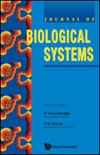ENDEAVORING THE ROLE OF OBESITY IN EXTRACELLULAR MATRIX DEGRADATION LEADING TO METASTASIS
IF 1.3
4区 数学
Q3 BIOLOGY
引用次数: 0
Abstract
One of the significant causes of death globally is cancer ( http://www.who.org/ ). Another critical problem is obesity, which is associated with an increased cancer threat. This work provides insight into how obesity contributes to cancer progression and metastasis. We developed a diffusive obesity-cancer model consisting of cancer cells, normal cells, fat cells, macrophages, and an extracellular matrix (ECM) for this aim. We have directed the formed model’s global existence and non-negativity. Equilibrium points for the related ODE are calculated, and its existence and stability study is also done. We present a traveling wave analysis of the obesity-cancer model and have calculated the minimum wave speed. Using a combination of analytic and numerical results of traveling waves, we conjecture that the minimal wave speed depends on fat cells’ diffusive rate and haptotaxis coefficient. We followed the theory of the Partial Rank Correlation Coefficient (PRCC) to carry out a global sensitivity analysis to evaluate the most sensitive parameters reliable for cancer progression. We delivered a comprehensive numerical analysis of our deterministic and diffusive models (in 1D and 2D) and analogized the result. Numerical simulation of corresponding spatially explicit systems conveys complex spatio-temporal dynamics, resulting in the appearance of patterns. It also discloses that cancer spread increases with increased haptotaxis coefficient and growth rate of obese cells. Our simulation confirms that the degradation of the ECM increases cancer spread and density.研究肥胖在细胞外基质降解导致转移中的作用
癌症是全球死亡的重要原因之一 ( http://www.who.org/ )。另一个关键问题是肥胖,肥胖与癌症威胁的增加有关。这项研究深入探讨了肥胖是如何导致癌症进展和转移的。为此,我们建立了一个由癌细胞、正常细胞、脂肪细胞、巨噬细胞和细胞外基质(ECM)组成的扩散性肥胖-癌症模型。我们对该模型的全局存在性和非负性进行了研究。我们计算了相关 ODE 的平衡点,并对其存在性和稳定性进行了研究。我们对肥胖-癌症模型进行了行波分析,并计算了最小波速。结合行波的解析和数值结果,我们推测最小波速取决于脂肪细胞的扩散速率和游走系数。我们根据部分秩相关系数(PRCC)理论进行了全局敏感性分析,以评估对癌症进展最可靠的敏感参数。我们对确定性模型和扩散性模型(一维和二维)进行了全面的数值分析,并对结果进行了类比。对相应的空间显式系统进行的数值模拟传达了复杂的时空动态,从而产生了一些模式。它还揭示了癌症扩散会随着肥胖细胞游走系数和生长速度的增加而增加。我们的模拟证实,ECM 的退化会增加癌症的扩散和密度。
本文章由计算机程序翻译,如有差异,请以英文原文为准。
求助全文
约1分钟内获得全文
求助全文
来源期刊
CiteScore
2.80
自引率
12.50%
发文量
31
审稿时长
1 months
期刊介绍:
The Journal of Biological Systems is published quarterly. The goal of the Journal is to promote interdisciplinary approaches in Biology and in Medicine, and the study of biological situations with a variety of tools, including mathematical and general systems methods. The Journal solicits original research papers and survey articles in areas that include (but are not limited to):
Complex systems studies; isomorphies; nonlinear dynamics; entropy; mathematical tools and systems theories with applications in Biology and Medicine.
Interdisciplinary approaches in Biology and Medicine; transfer of methods from one discipline to another; integration of biological levels, from atomic to molecular, macromolecular, cellular, and organic levels; animal biology; plant biology.
Environmental studies; relationships between individuals, populations, communities and ecosystems; bioeconomics, management of renewable resources; hierarchy theory; integration of spatial and time scales.
Evolutionary biology; co-evolutions; genetics and evolution; branching processes and phyllotaxis.
Medical systems; physiology; cardiac modeling; computer models in Medicine; cancer research; epidemiology.
Numerical simulations and computations; numerical study and analysis of biological data.
Epistemology; history of science.
The journal will also publish book reviews.

 求助内容:
求助内容: 应助结果提醒方式:
应助结果提醒方式:


